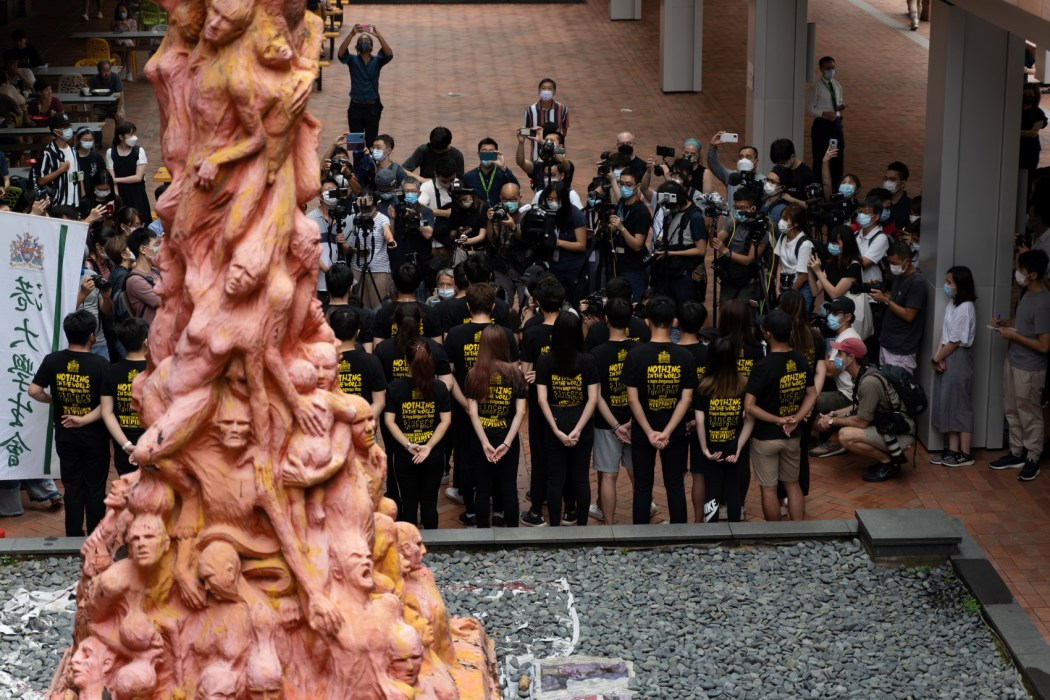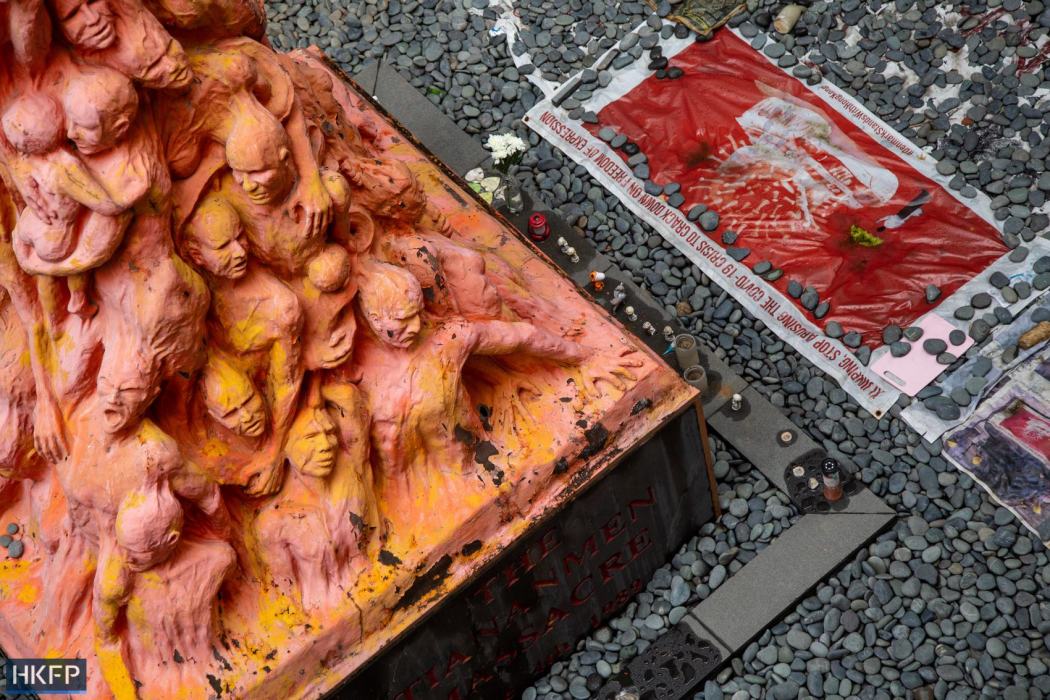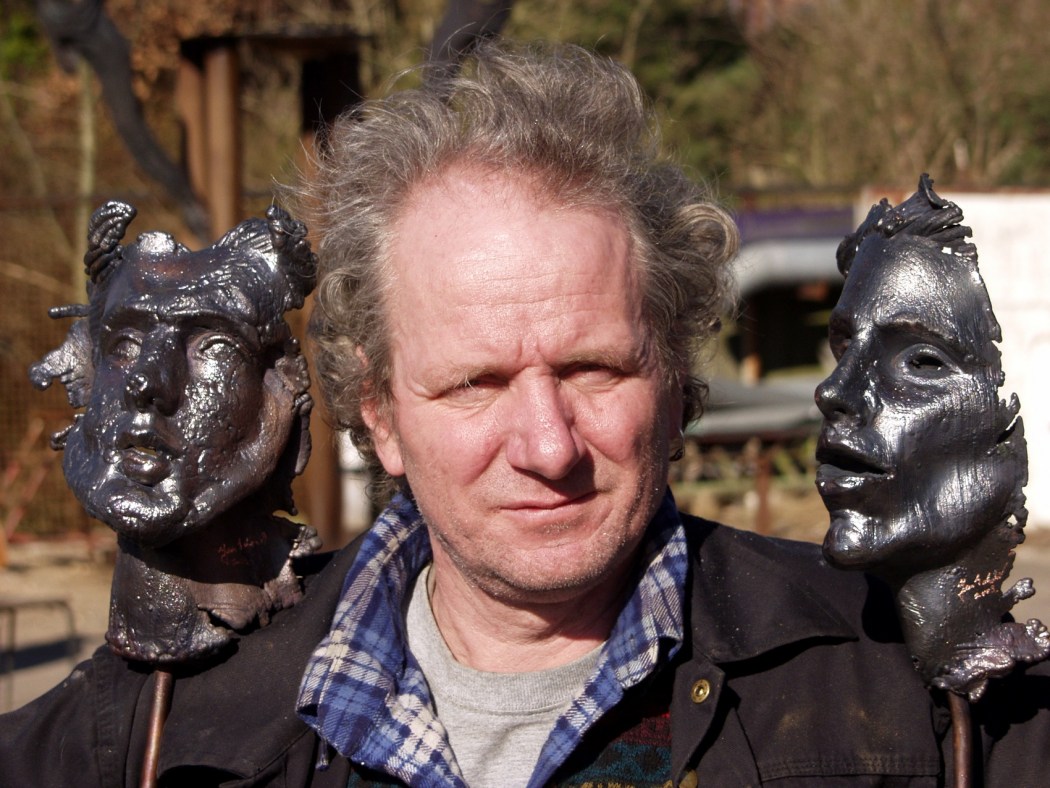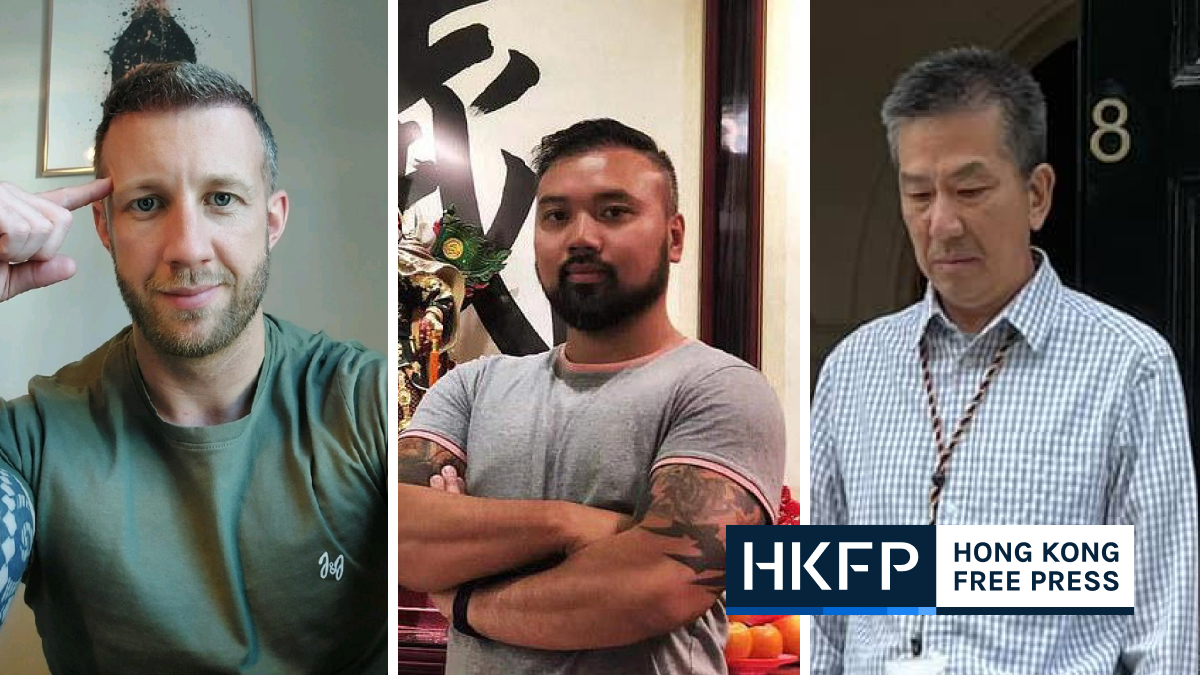The Security Bureau has hit back at calls for the return of a monument to the 1989 Tiananmen crackdown, after national security police seized it.

The Pillar of Shame was confiscated by police investigating an “incitement to subversion” case, local media reported on Friday.
See also: Hong Kong’s 48-hour campus crackdown on the memory of the Tiananmen Massacre
In a Saturday press release, the Bureau said that the move to seize the eight-metre tall monument was “legal, reasonable and rational.”

“The organisation concerned attempted to make misleading comments and request for the return of the exhibit under the guise of artistic freedom, and unreasonably condemned and maliciously smeared the lawful enforcement actions of the Police, absolutely defying the law and disregarding the rule of law,” the spokesman said, in reference to a campaign by Czech organisation, NGO DEI.
See also: The Pillar of Shame: The history of Hong Kong’s harrowing tribute to the Tiananmen massacre victims
The statue’s creator, Danish artist Jens Galschiøt, told HKFP on Friday afternoon that he thought it was “completely crazy” that the sculpture was allegedly being used as evidence against democracy activists. He said he had asked to put the pillar up in Hong Kong more than two decades ago and the artwork was his “personal statement,” adding that he believed it was good to discuss the Tiananmen crackdown in Hong Kong.

“The [Hong Kong] Alliance and this group of people who are in jail now that I worked together with a long time ago… they have nothing to do with that,” the sculptor said.
Galschiøt’s team have since launched a petition urging for the statue’s return.


The Tiananmen crackdown occurred on June 4, 1989 ending months of student-led demonstrations in China. It is estimated that hundreds, perhaps thousands, died when the People’s Liberation Army cracked down on protesters in Beijing.
Statues removed
The University of Hong Kong (HKU) removed the harrowing tribute from campus in December 2021, whilst students were away, citing safety issues, legal advice and the Crimes Ordinance. Since then, the artwork was reportedly been stored at the HKU Kadoorie Centre in Yuen Long. In addition to HKU, the Chinese University of Hong Kong and Lingnan University also removed Tiananmen crackdown monuments in December 2021.

The now-defunct organiser of Hong Kong’s annual Tiananmen crackdown vigil – the Hong Kong Alliance in Support of Patriotic Democratic Movements of China – together with three of its leading members, Lee Cheuk-yan, Albert Ho and Chow Hang-tung have been charged with inciting subversion under the national security law.
Earlier this year, Galschiøt sent a representative to HKU to secure the return of the pillar, which he has claimed ownership of. The artist also told HKFP in February that he would take legal action against the university, “if necessary,” in order to get the statue back.
In June 2020, Beijing inserted national security legislation directly into Hong Kong’s mini-constitution – bypassing the local legislature – following a year of pro-democracy protests and unrest. It criminalised subversion, secession, collusion with foreign forces and terrorist acts, which were broadly defined to include disruption to transport and other infrastructure. The move gave police sweeping new powers, alarming democrats, civil society groups and trade partners, as such laws have been used broadly to silence and punish dissidents in China. However, the authorities say it has restored stability and peace to the city.
Support HKFP | Policies & Ethics | Error/typo? | Contact Us | Newsletter | Transparency & Annual Report | Apps
Help safeguard press freedom & keep HKFP free for all readers by supporting our team

























